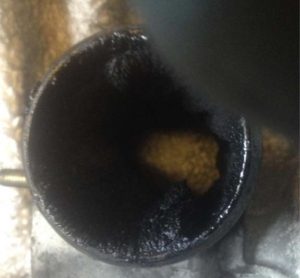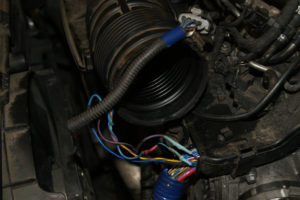Andy Horwat, Engine Tuning & Diagnostics, looks at a 2012 Volvo XC60 2.0L model with drivability/starting issues and lack of power.
An interesting case study came my way recently in the form of a Volvo XC60 – a 2.0 litre model supported by a Bosch EDC 17 system. The vehicle year was 2012 with 64,000 miles on the clock and the car was an ex-lease, purchased from a dealer out of town.
The owner explained that the vehicle had been suffering from a drivability issue, difficulties with starting and a lack of power. He also mentioned hesitation when the engine was cold. With this brief explanation I decided to take the car for a test drive with the scan tool connected and the DTC report printed for reference. The faults read were both mass air flow and EGR which looked like good starting points, considering the mileage of the vehicle.
Looking closely under the bonnet I noticed immediately that the car hadn’t received the quality maintenance it deserved and, on further inspection, I could see that the intake system was badly contaminated. I first opted to dismantle the intake pipes and the EGR valve – a very time-consuming job for those who have worked on these types of Volvos before.
Once the EGR was removed I could see an immediate issue: the EGR valve was completely clogged (see image below).
 Although the valve still functioned on the test drive, I spent some time cleaning these parts so as to examine them more thoroughly.
Although the valve still functioned on the test drive, I spent some time cleaning these parts so as to examine them more thoroughly.
After starting the engine, I allowed the vehicle to warm up and all appeared to be normal. However, taking the car on a test drive and reading the data showed that things were anything but normal – the readings for the EGR would collapse to zero and then display a normal reading. Did this mean that the valve motor was at fault? At this point the engine management light appeared – bad news and back to the drawing board!
I connected the scan tool and the DTC mass air flow low voltage couldn’t be cleared. As I had the scan tool connected, I opted to do a bi-directional control on the EGR valve and all appeared to be normal. This confirmed that the wiring and ECU must be good, so it was time to get back on the road again, this time with some assistance pulling two parameters: EGR and mass air flow. The output readings were zero, but the car performance was very good; as this system is produced by Siemens it clearly has a quality engine management computer!
At this point I decided to pull out my trusted PicoScope and perform a visual inspection of the wiring harness that runs up to the mass air flow meter. This check was easy and, after pulling back the insulation cable, I noticed two wires that had been cut. Although the fix was easy, it still begs the question as to how on earth this happened.
The harness is attached to the battery box with a push-in fastener and the torque twist from the engine was causing stress on the harness, with the plastic cover acting as a knife. The image (below) shows how I re- routed the loom away from the battery housing and free from stress. I took the time to re-check the DTCs and, after checking the mass air flow and voltage parameters, all was good. It was now time for another test drive.
A prolonged test drive did indeed conclude a successful repair, though I still felt that there was room for improvement. After getting back in touch with the owner I recommended an induction system clean, especially when you consider how badly the EGR valve was contaminated and the restrictions this was likely to put on the inlet system. It was agreed that I would perform a service on the vehicle, using the BG Products inlet system clean and an engine oil flushing agent.
To ensure the best results, the old oil was drained before adding the 109 BG performance restorer. I also changed both the oil and air filters at the same time. After taking the car out for yet another road test it was clear that further improvements in the vehicle’s performance had been achieved.
Conclusion
In this case study there were multiple faults: the mass air flow DTC had presented itself after the parts had been reassembled to gain access to the EGR valve, which I suspected in the first place. The big giveaway here was, of course, the wiring fault and, whilst dismantling, the air cleaner box was removed and the mass air flow harness disconnected and moved.
A further point to note is that wiring harnesses don’t like being stressed out or cooked on a hot exhaust and that is exactly what had happened to the damaged part of the loom. The actual cause of this problem is a VM design fault (which people should be made aware of) and I’m certain this won’t be the last time we hear of this particular issue.











